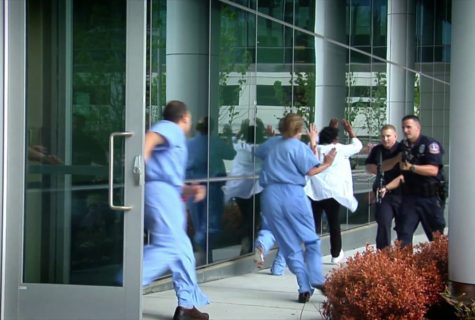
Recently, with massive wildfires, chart-topping storms and more, emergency preparedness has been on many people’s mind, with good reason, and it’s something that hospital and provider administrators think about on a regular basis.
Now, CMS has come out with a directive covering many of the aspects of how providers must operate in a range of emergency scenarios. The Emergency Preparedness Requirements for Medicare and Medicaid Participating Providers and Suppliers final rule was posted September 8, and goes into effect November 16. It covers all 17 types of providers and suppliers, and covers planning for “both natural and man-made disasters.”
CMS lists the 17 types of providers and supplies required to comply with this Final Rule as follows:
- Hospitals
- Religious Nonmedical Health Care Institutions (RNHCIs)
- Ambulatory Surgical Centers (ASCs)
- Hospices
- Psychiatric Residential Treatment Facilities (PRTFs)
- All-Inclusive Care for the Elderly (PACE)
- Transplant Centers
- Long-Term Care (LTC) Facilities
- Intermediate Care Facilities for Individuals with Intellectual Disabilities (ICF/IID)
- Home Health Agencies (HHAs)
- Comprehensive Outpatient Rehabilitation Facilities (CORFs)
- Critical Access Hospitals (CAHs)
- Clinics, Rehabilitation Agencies, and Public Health Agencies as Providers of Outpatient Physical Therapy and Speech-Language Pathology Services
- Community Mental Health Centers (CMHCs)
- Organ Procurement Organizations (OPOs)
- Rural Health Clinics (RHCs) and Federally Qualified Health Centers (FQHCs)
- End-Stage Renal Disease (ESRD) Facilities
If you practice within one of these organizations, you’ll need to demonstrate compliance with the Emergency Preparedness Final Rule to participate in Medicare or Medicaid. So, if you’re in administration, or on a team in a medical facility, this is going to have some big impact on your job. How will you and your employer review facilities plans? What is your planning going to look like? Clinical managers are asking these and other questions as they read the fine print on this latest CMS directive.
What’s In the Rule?
The Final Rule covers four general areas: Risk Assessment and Planning, Policies and Procedures, Communication Plan, and Training and Testing. Providers must implement an “all hazards approach,” something that CMS put in place to help deal with anything from a hurricane to a terror attack.
You’ll have to look at new rules for training, including the on-boarding of new staff. There are facilities requirements, and there are requirements for emergency preparedness exercises, for instance, specific mandates for exercises to be conducted by Ambulatory Surgical Centers.
In addition, CMS calls for various other kinds of drills, to be applied in a range of situations, to guard against threats that providers may face on site. These range from earthquakes, tornadoes, hurricanes and flooding to active shooter scenarios, and even cyberattacks.
The final rule will also ask you to reach out to local emergency management officials in a given community: “coordination with federal, state, tribal, regional and local emergency preparedness systems.” There are guidelines for how to make sure a provider demonstrates compliance in working closely with local police and fire first responders and others with local jurisdiction and responsibility for emergency preparedness.
Nursing Homes and Long Term Care Centers
The Emergency Preparedness Rule also governs certain standards for nursing homes, as well as other facilities, in terms of keeping an environment hospitable for patients.
With recent reports around the deaths of several nursing home residents in Florida during Hurricane Irma because of air conditioning failure, administrators just can’t afford to ignore the clauses that focus on facilities planning.
Although you have some leeway in how you ensure the safety of your patients, it seems clear that in terms of air conditioning and heating equipment, a backup must be available, and effective and able to maintain comfortable and safe room temperatures in the event of a power outage or other failure.
Planning Formats
Unfortunately, the Final Rule does not provide a lot of detailed guidance on planning formats. There are, however, hard requirements to have the various types of planning included in your overall plan.
For questions regarding elements of a plan such as continuity of operations, succession planning, and delegations of authority, CMS has provided this stock answer:
“We are not requiring a specific format for the manner in which a facility should have their Emergency Plans documented. Upon survey, a facility must be able to provide documentation of the policies and procedures and show surveyors where the policies and procedures are located.”
The Emergency Preparedness Rule final rule establishes standards to help you demonstrate that you stand ready for some of the frightening scenarios that can compromise the wellbeing of your patients. And the consequences of not complying can be as severe as losing your Medicare and Medicare approval. So, if you are one of the 17 providers and suppliers listed above, you had better sit up and take notice.
